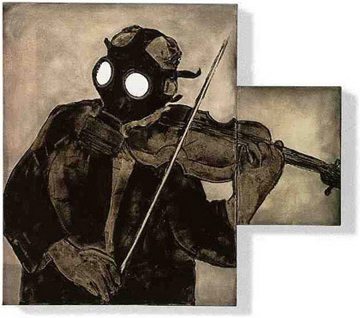Contemporary art will often ask the viewer to consider process and the steps taken to create a work of art. Without consideration of process, some art is even difficult to understand. But for students studying art, whether it’s fine art or commercial design, submersion in and awareness of their own process is the key to being flexible with ideas as they emerge. It’s also the key to exploring pathways that open up because of chance “mistakes.”
More and more, I am being reminded of the work we have to do on the “front end” as teachers. This is the work that takes place before the lessons, before writing the unit, before creating assessment criteria, before gathering materials and assembling visuals. This is the work that involves organizing our inspirations and big questions into something that not only works within a curriculum framework, but simultaneously is inspiring and meaningful for the students.
Guided exploration of contemporary media, themes, big questions, “undiscovered” artists and possibilities are some of the greatest gifts we can give our students. Helping students keep sketchbooks to organize ideas and keep track of progress is also a gift that directly relates to teaching them how to reflect on their own process for making art (see Mining Ideas Part 1, Part 2 and Part 3). Through teaching with contemporary art, we open up our classes to being more directly involved with process and the power that comes with taking the extra time to become immersed in a medium, theme, question or activity.
Pictured above: Ida Applebroog, “Marginalia (Isaac Stern)”, 1992
Oil on canvas, 2 panels, 35 x 39 inches overall
Photo by Dennis Cowley. Courtesy Ronald Feldman Fine Arts, New York




